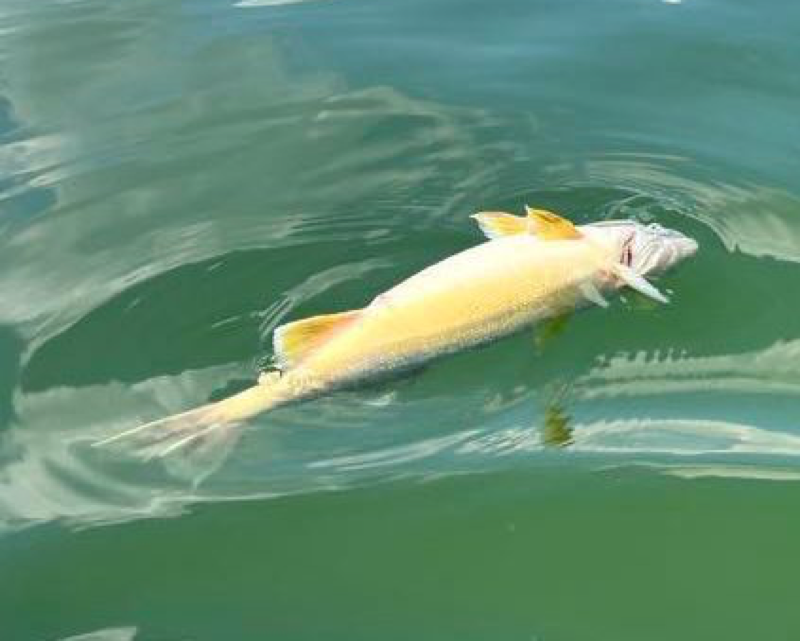TWRA “monitoring” Dale Hollow walleye

Agency “specifically” watching Horse Creek and Mitchell Creek areas
CLAY COUNTY-The Tennessee Wildlife Resources Agency (TWRA) announced over the weekend they are “currently monitoring Dale Hollow Reservoir where high water temperatures, low dissolved oxygen, reduced flows, and changes in water levels have contributed to the mortality of approximately 250 walleye,” a news release from the agency said.
The information explained Horse Creek and Mitchell Creek areas here on the lower end of the lake “are specifically being monitored.”
Horse Creek resident Ellis Bevill witnessed multiple dead walleye floating late last month and contributed to an online story written by Richard Simms and posted on NewsChannel9.com last week.
“Ellis Bevill, formerly from Chattanooga but now living on Dale Hollow, said he first noticed the dead walleye last Friday (Aug. 23),” Simms’ story said. “Bevill said he has also seen some dead shad, a common baitfish utilized by walleye.”
The TWRA news release contributed the current fish kill to environmental factors, which have been determined as the cause of previous fish mortality events.
“Walleye seeking baitfish and cooler water temperatures can fall victim to low dissolved oxygen levels in the water,” the release said. “These occurrences are weather related, with the last significant incident taking place at Dale Hollow in 2012 when conditions were similar.
“Currently, it is mostly walleye affected by poor conditions. However, if weather and water conditions do not change, other game species could be affected,” the information continued. “In 2012, game and non-game species were affected, including walleye and black bass.”
According to HORIZON archives from the summer of 2013—when the TWRA released the findings from their extensive investigation into the Dale Hollow fish kill of 2012, it was determined environmental factors were likely the cause, as the agency contributed the event to drought conditions and higher than average temperatures after ruling out viruses, bacteria, and parasites with testing.
At the time, the TWRA said environmental factors causing fish kills “could include, but are not limited to, non-favorable oxygen levels at desired depth ranges which can change daily, harmful algal blooms, change in flow regimes affecting water layers and changes in reservoir retention time or other water quality issues.”
The articled printed in the newspaper over a decade ago also quoted the TWRA explaining “Dale Hollow has overcome adversities in the past,” saying “fish kills in reservoirs are not uncommon,” and reminding the reservoir had endured such events including “notable fish kills” in 1975 (carp and white bass), 1989 (lake trout), and 1998 (smallmouth and walleye).
The agency also offered similar insight in their latest news release.
“Dale Hollow populations have been resilient in the past with no long-term effects to the populations, and TWRA fisheries staff will continue to monitor and manage fish populations through various data collection methods on all reservoirs,” the release said.
For Simms complete article about the issue, visit Newschannel9.com/sports/outdoors/twra-monitoring-walleye-die-off-on-dale-hollow.
